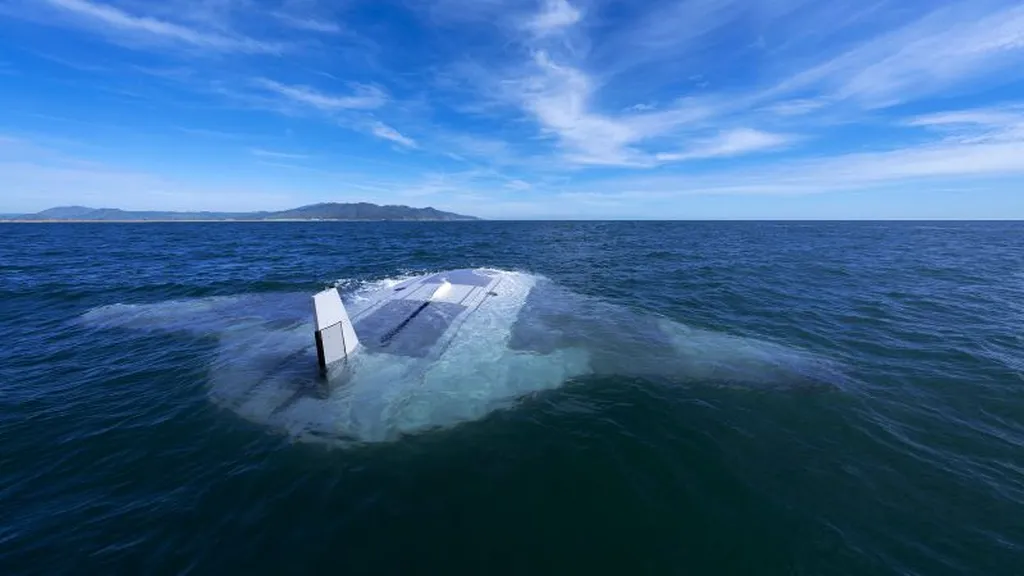In the heart of Sydney’s inner west, a nondescript brick building houses a secret factory where some of the world’s most advanced military technology is taking shape. This is where US defence technology firm Anduril is manufacturing the Ghost Shark, an autonomous submarine drone designed to revolutionise underwater warfare. David Goodrich, Anduril Asia Pacific’s executive chairman and CEO, recently provided a rare glimpse into the facility, revealing a cutting-edge operation that blends innovation with military precision.
The Ghost Shark, a black, boxy vessel resembling a beached whale, is anything but ordinary. Packed with ultrasophisticated equipment, it uses advanced AI to sense, detect, and make decisions autonomously. Capable of reconnaissance, surveillance, and strike missions, these uncrewed vessels are designed to handle the “dull, dirty, and dangerous” tasks traditionally assigned to crewed submarines. The facility, which opened just weeks ago, buzzes with activity as engineers tinker with components and test the drones in a 20-metre-long tank. A Sensitive Compartmented Information Facility (SCIF) within the building holds the drone’s military secrets, accessible only to those with the highest security clearance.
Anduril, co-founded by entrepreneur Palmer Luckey, specialises in AI, robotics, and autonomous technology. Goodrich, a former strategic negotiation adviser for the Australian Department of Defence, set an ambitious goal when the company opened its Australian operations in 2022: to develop an underwater drone in just 3.5 years—a timeline that initially drew scepticism. The gamble paid off. The Australian government has announced a $1.7 billion investment to acquire dozens of Ghost Sharks for the Royal Australian Navy, with the first unit scheduled to enter service in January 2026.
Deputy Prime Minister Richard Marles and Minister for Defence Industry Pat Conroy unveiled the Ghost Shark, with Marles declaring it the “highest tech capability in the world.” Despite China’s recent display of advanced underwater drones, Marles remains confident in Australia’s technological edge. “We are really confident in standing here today and saying that Ghost Shark is the best underwater autonomous military capability on the planet,” he stated. The exact specifications and range of the Ghost Shark remain classified, but Marles hinted at its impressive capabilities, stating it “goes a really, really long way.”
The Ghost Shark is part of a broader push by the Australian Defence Force (ADF) to embrace autonomous systems, a shift that has been long overdue. Almost a decade ago, former defence force chief Angus Houston warned that the ADF was lagging in drone technology, a gap that has only recently begun to close. The ADF’s reluctance to adopt autonomous systems has been a point of criticism, with retired army major general Mick Ryan describing the military as “extraordinarily resistant” to such advancements. “We’re a long way behind the rest of the world,” Ryan said, highlighting the potential of Australian companies to lead in this sector.
The ADF’s recent strides include the development of the MQ-28A Ghost Bat, an autonomous drone designed to operate alongside traditional crewed aircraft. Developed by Boeing in Australia, the Ghost Bat is the first military combat aircraft designed, engineered, and manufactured in Australia in over 50 years. The government has invested heavily in the project, with plans to pour hundreds of millions more into its development. “The Ghost Bat has the potential to turn a single fighter jet into a fighting team, with advanced sensors that are like hundreds of eyes in the sky,” Conroy said in June.
While the progress with the Ghost Shark and Ghost Bat is promising, some experts caution against overstating Australia’s newfound leadership in autonomous systems. Michael Shoebridge, a former senior defence official, argues that the ADF is still playing catch-up. “It’s more like we’ve poked our head out of the turtle shell,” he says. “We’re at least 10 years behind China in this area.” Shoebridge criticises the Defence Department’s slow-moving procurement process, which has favoured traditional, crewed platforms over innovative, uncrewed systems.
The war in Ukraine has underscored the critical role of drones in modern warfare. Ukraine’s use of 117 attack drones in Operation Spider’s Web, which targeted Russian airfields and destroyed strategic assets, demonstrates the potential of autonomous systems in combat. Michael Horowitz, a senior fellow for technology and innovation at the Council on Foreign Relations, noted that the conflict has accelerated the adoption of drones as one-way attack systems, a capability previously used only in limited quantities.
As Australia continues to invest in and develop autonomous military technology, the Ghost Shark and Ghost Bat represent a significant step forward. However, the ADF must overcome its historical resistance to innovation and accelerate its adoption of these systems to keep pace

